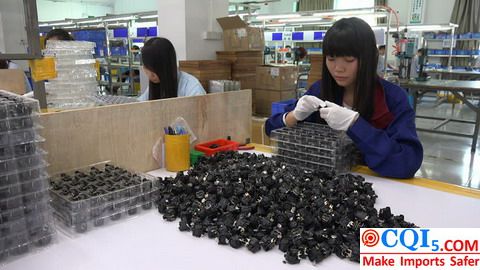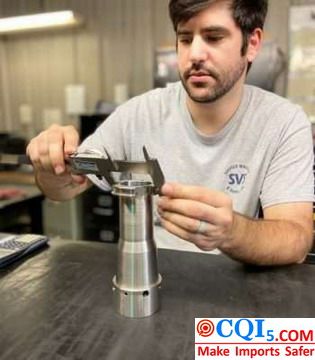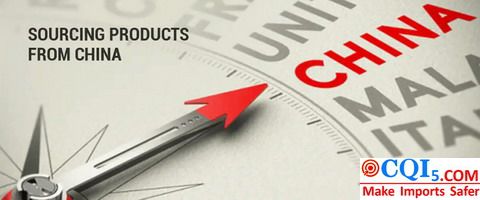Ensuring the authenticity of test samples is a critical step in global supply chain management.
Asian factories, particularly those in China, have been known to occasionally pass product quality tests by using counterfeited samples, posing challenges to importers and retailers.
This is primarily because they did not utilize the services of pre-shipment inspection companies that offer random sample extraction, leaving them reliant on factory-provided samples for laboratory testing.

Prior to placing orders or shipping products, importers and retailers typically request samples for safety tests.
They mistakenly believe these samples are randomly selected from mass production when, in fact, without third-party random sampling services, factories could craft specific samples to ensure they pass lab tests.
The driving force behind such behavior is “profit”. Statistics show that factories could lose nearly 50% of their profits if all products were made to standard. Consequently, the prevalence of counterfeiting samples to pass tests is rather common in Asian factories under the influence of profits.
Many importers and retailers trust their suppliers to be honest and reliable,
thereby overlooking the risk of sample counterfeiting or turning a blind eye to potential fraudulent practices to cut costs.
However, when product quality issues trigger recalls or fraudulent practices are exposed, companies may face substantial economic losses or even bankruptcy.
Therefore, more importers and retailers have begun to incorporate third-party pre-shipment inspection companies for random sample extraction to ensure sample authenticity. Such services can effectively reflect the quality of the entire batch of products and reduce the likelihood of factories using counterfeited samples.
Pre-shipment inspection companies, like CQI, use random sampling to select samples from a large number of products, rather than using factory-prepared samples.
This method ensures the consistency of sample quality with the batch products, thus ensuring products meet the standards.
In global trade, managing supply chain risks is crucial. Random sampling services can help importers and retailers ensure sample authenticity and avoid potential risks brought by sample counterfeiting.
For new factories or those producing technical or easily shortcut products, adopting initial production inspections to supervise the choice of raw materials is also an effective method.

This not only allows early identification of problems, avoiding risks during mass production, but also provides factories with targeted production suggestions.
In summary, ensuring the authenticity of test samples is a key aspect of supply chain management. All importers and retailers need to remain vigilant and take necessary measures, including using random sampling services provided by third-party pre-shipment inspection companies, to ensure sample authenticity.
References
Zhou, P., & Grunow, M. (2016). Impact of sampling on order acceptance decisions in quality inspection. European Journal of Operational Research, 251(1), 182-195.
Zhou, S., & Kouvelis, P. (2011). The quality assurance problem. Operations Research, 59(2), 266-281.
Cai, W., & Zhou, S. (2012). Quality improvement and goodwill depreciation in a supply chain. Management Science, 58(12), 2315-2332.
Kong, G., Rajagopalan, S., & Zhang, H. (2015). Revenue management for strategic customer behavior with committed demand. Management Science, 61(8), 1871-1887.
Kouvelis, P., & Zhao, W. (2012). The newsvendor problem and price-only contract when bankruptcy costs exist. Management Science, 58(10), 1933-1955.
Si, X., & Zhou, W. (2011). A survey of manufacturing strategy and technology in the Chinese automotive industry. Journal of Manufacturing Technology Management.
Zhao, X., Xie, J., & Jiang, W. (2002). The impact of information sharing and ordering co-ordination on supply chain performance. Supply Chain Management: An International Journal.
Zhou, S., & Cai, W. (2010). Quality improvement in a supply chain: who should lead it?. Journal of the Operational Research Society, 61(2), 296-308.
Aqlan, F., & Lam, S. S. (2015). Supply chain optimization under risk and uncertainty: A case study for high-end server manufacturing. Computers & Industrial Engineering, 87, 185-193.
Min, H., & Zhou, G. (2002). Supply chain modeling: past, present and future. Computers & Industrial Engineering, 43(1-2), 231-249.
Cohen, M. A., & Lee, H. L. (1988). Strategic analysis of integrated production-distribution systems: models and methods. Operations research, 36(2), 216-228.
Li, X., & Wang, Q. (2007). Coordination mechanisms of supply chain systems. European Journal of Operational Research, 179(1), 1-16.
Cachon, G. P., & Lariviere, M. A. (2005). Supply chain coordination with revenue-sharing contracts: strengths and limitations. Management science, 51(1), 30-44.
In conclusion, preventing counterfeit test samples is vital for global supply chain management.
All importers and retailers need to stay highly alert and take necessary preventative measures. Utilizing random sampling services from third-party pre-shipment inspection companies to ensure sample authenticity is an effective risk reduction strategy.
Additionally, for new factories or those producing technical or easily shortcut products, adopting initial production inspections is also an important strategy.
In international trade where risks abound, rigorous supply chain management and effective prevention strategies are key to avoiding potential losses and achieving sustained success.





